- Home
- Laurie R. King
The Beekeeper's Apprentice Page 5
The Beekeeper's Apprentice Read online
Page 5
“Studies in the Literature of Sherlock Holmes”
It wasn’t until I took a closer look at Knox’s essay that I realized how not entirely inappropriate it was to ask Laurie King to follow in the good Monsignor’s footsteps, despite her clear amateur status in The Game. My background is in theology, which was also the background of Ronald Knox and a fair number of other early Sherlockiansx. When he writes, “We sift and winnow the Gospel of St. Luke, in order to produce a Synoptic problemxi, because St. Luke, poor man, never knew the Synoptic problem to exist,” then goes on to wrestle with the conundrum of the “Deutero-Watsonxii,” and continues into the classification of the “Exegesis kata ton diokonta,xiii” I am probably one of a handful of BSI members for whom these references are not, so to speak, utterly and completely Greek.
Early Sherlockian scholars adopted the methods of Biblical criticismxiv to analyze their own Received Text—indeed, the fifty-six short adventures and four book-length tales bearing the imprimatur of Sir Arthur Conan Doyle are even termed the Canon. The presumptuous Biblical scholars who dared to address inconsistencies and illogicalities within Holy Scripture were not only heirs to the Talmudic tradition of wrestling with divine messengers (angel meaning messenger,) they further laid the groundwork for later scholars (whose approach was at times less one of wrestling than of bashing with blunt implements.)
In both the biblical and the Holmes branches of Canonical scholarship, emotional attachment—one’s religion—can get in the way of academic purity—one’s theology. In The Grand Game, therefore, we do not venture to convince the reader of the rightness or wrongness of any particular argument or approach to Holmesian Scripture. One keeps one’s tongue solemnly planted in one’s cheek, and allows fanaticism to rage on its own side of the border.
The Game
The Grand Game is by no means a complete survey of Sherlockian scholarship. Rather, we asked a number of eminent Sherlockians and Holmesians to nominate essays they found extraordinary for any reason: close scholarship, ground-breaking ideas, true wit, notable authors, even general oddity. The two editors then attempted to “sift and winnow” the suggestions with an eye to the broad view: a mix of voices and a sample of key issues. Volume One spans the first sixty years after Knox’s essay, with a handful of his precursors thrown in for good measure. It is intended as in introduction to the genius, the flavor, and the idiosyncrasies of the genre known as Sherlockian criticism.
In his essay, Knox addresses three major concerns: the authenticity of the Watson authorship, an attempt to date the stories, and an exploration of the organization and roots of the stories. However, just as the Canon he was addressing grew enormously after his essay (from twenty-six stories to forty,) so too did the Knox essay itself swell into The Game, his initial three-fold structure becoming subsumed in a wider paradigm.
All criticism must grow; each generation of minds must stretch to reach beyond the last. Hence, The Grand Game embraces Knox’s divisions, but (in the best tradition of higher criticism) also explores past their limits. The collected essays that follow are divided into four major categories. Three of those Knox would acknowledge as appropriate to Canonical criticism: Lower (or textual) criticism; higher criticism; and radical criticism (which here includes outright heresy.)
Our fourth category reaches deeper even than Wellhausen and his Protestant predecessors, back into the Rabbinic roots of Biblical commentary. This category we call Midrash.
At the risk of pointing out the obvious, let us note that by “criticism” we do not mean a voice of condemnation or disapproval, but the exercise of critical thinking. A True Believer need not suspend his or her faith to apply rational thought to the source of that faith, in religion, or in The Game. Criticism is an active dialogue with the original text, and with others who are also discussing that text.
Textual Criticism (Also called “lower criticism.”)
If, as said above, by “criticism” we refer to the employment of critical thinking, similarly by “lower” we mean not something of lesser value, but rather the solid foundation on which other critical remarks must be laid. Textual criticism seeks to identify the original text, the pure version obscured by centuriesxv of scribal errors, well-meaning substitutions, and the absorption of side-bar amendments or remarks by generations of copyists. For example, in the New Testament’s Codex Sinaiticus one sees remarks inserted, and later cancelled, by layers of scribes who—in the fourth century!—are already doing text criticism, trying to determine which words and phrases are those of the original Gospels and which were added.
Similarly in Holmesian criticism, debate may be held as to the relative primacy of the American or British printed texts, or concerning the influence of Watson’s hand-writing on the final product.
Knox’s essay contains a clear example—a phrase in the “Gloria Scott” adventure, during the two years that I was at college, and its argument with the statement in “The Musgrave Ritual,” during my last years at the university (suggesting that Holmes spent three or more years there)—that vanishes completely if subjected to the simple textual emendation of removing a typographical error: If one acknowledges that somehow an “s” strayed into the mix, my last years becomes my last year, and the problem vanishes, just as the infamous 1631 call to adultery vanishes when “not” is restored to the seventh commandment, and people are no longer instructed, “Thou shalt commit adultery.”xvi
Higher Criticism
If “textual criticism” seeks to deliver the pure text, undiluted by commentary, “higher criticism” goes beyond the sheer text itself. Yet paradoxically, if “lower” criticism establishes the foundation, “higher” criticism burrows beneath that foundation, seeking the very bedrock on which the text grew. Higher criticism is concerned with the origins of a text—who wrote it, when, where, and for what purpose? What conditions was the author writing in, and about?
To use an illustration from Knox’s own essay, his statement, The evil that [Holmes] did lived after him, the good is interred with him in the Reichenbach would give us the essay’s date even if we did not know its publication history. Knox was writing after The Hound of the Baskervilles, but before The Valley of Fear began to appear in the Strand—more than half the Holmes stories lay before him.
In Knox’s time, higher criticism of the Bible was still a fairly radical thing (a century later, many still find the scientific approach to religion a radical thing.) Foremost in Knox’s mind—and no doubt the reason so many of the essay’s dotty names are German—would have been Julius Wellhausenxvii, who proposed that the Torah (or Pentateuch, the first five books of the Bible) was not the sole and original work of the prophet Moses, but rather had been woven together, out of four independent narratives, over several centuries. The individual elements of Wellhausen’s theory were not original—one could argue that the ancient Rabbis addressed many of his concerns—but the authority with which he set it forth reshaped biblical study.
Wellhausen’s sources, “J,” “E,” “P,” and “D,”xviii were no doubt in the back of Knox’s mind, although as a high-church Anglican (later, Roman Catholic) he would have been more concerned with the classifications of the “Pauline” and “Deutero-Pauline” epistles when it came to his remarks concerning Watson and the “deutero-Watson.” (One can only speculate whether, were Knox to have written this essay fifteen years later, he might have expanded his classifications to follow the system of Pauline attributions, and blame a “pseudepigraphic Watson” for the stories “Lion’s Mane,” “Blanched Soldier,” and “Mazarin Stone.”)
Radical Criticism
The inevitable extension of higher criticism is radical criticism. By the time Knox wrote his Studies, the radicals were in full voice, declaring that none of the Pauline letters were Paul’s,xix that the apostles were a fable, and that even Jesus himself either did not exist, or existed as a person with little relation to the Jesus we picture.
The line between radical criticism and outright heresy is a
thin one. For the purpose of The Grand Game, that line is erased entirely. Whether the reader feels that Rex Stout’s assertion, “Watson was a woman” is a radical interpretation or a heretical outrage is one of those places where the emotional attachment of religion engages in fisticuffs with the academic purity of theology. We leave that judgment, and that battle, to you.
Midrash
Midrash means “investigation.” To add some Greek to the Hebrew, midrash is a homiletic approach to Biblical interpretation (a homily being a sermon.) Midrash starts with a biblical phrase, line, or episode and makes from it a new thing, drawing on commentary, speculation, interpretation, and allegory to point the listener towards unseen links, urging an unexpected new view of a long-familiar text.
* *
Textual, Higher, and Radical criticisms, along with their ancestor Midrash, form the basis of the following collection. The category chosen for each piece reflects that piece’s primary concern, not necessarily its only concern—one essay may contain two, three, or even all four of the approaches. Some of the “textual criticism” pieces particularly belong better in the “higher” section, but Knox, and Wellhausen, would perhaps forgive our choice of aesthetic balance over strict academic accuracy.
Finally, to illustrate the interplay of the four categories of criticism contained in The Grand Game, an example built upon the Master’s surname:
1. To uncover a page of Conan Doyle’s original note-book showing how “Sherrinford Holmes” existed before “Sherlock,” thus establishing that the surname “Holmes” was the bedrock nomenclature, would be textual criticism.
2. To then link the name “Holmes” with the Norse word holmr, meaning island, would be an exploration of the origins of the Holmes stories, and would therefore be higher criticism.
3. However, to suggest that Arthur Conan Doyle, a British doctor, fiddled with the name on his note-book page not because he was trying to recall a name, but because he was inventing a character, and he chose that surname because it evoked the solitary nature of his character, would be radical criticism verging on the heretical.
4. And finally, were we to pen a new story with Mr. Sherlock Holmes going to a small island to work an investigation and in the process discovering something about his true nature, that would be midrash.xx
VII. Introduction to
The Hound of the Baskervilles
In the year 1901, Sherlock Holmes had been dead for nearly eight years, tossed into the crashing foam of the Reichenbach Falls by his creator, whose growing resentment of the great detective finally drove him to cold-blooded murder. During the two brief years of more or less monthly episodes, amounting to two dozen stories in the Strand magazine between July 1891 and December 1893, Holmes and Watson had propelled Arthur Conan Doyle straight into the storytellers’ stratosphere. By the end of the first twelve installments, the writer felt as if he were being eaten alive; twelve more, and he was desperate: Holmes had grown bigger than his author, and was threatening to dominate Conan Doyle’s real literary work. He had to go.
News of the detective’s tragic and untimely death shot in headlines around the world. Mourning bands appeared across England, young men made violent protest, thousands of Strand subscriptions were canceled by return of mail, and a story even made the rounds (perhaps apocryphal) that Conan Doyle had been physically attached by a handbag-wielding lady. But the doctor stood firm against the blandishments of the distraught publishers, the demanding public, and even (hardest of all to resist) his beloved mother: The brief, thrilling, and immensely profitable reign of Sherlock Holmes was over. Better literary work awaited his attentions.
Conan Doyle
Arthur Conan Doyle (the Conan is a given name, after a journalist great-uncle) was born in Edinburgh in 1859, to an Irish Catholic family bristling with artists, writers, and natural storytellers such as his mother. His upbringing was typical of the middle classes, with long months of cold and occasionally brutal English boarding school relieved only by summers at home. He went on to do a degree in medicine at the University of Edinburgh, during the same period that James Barrie and Robert Louis Stevenson were there, although he does not seem to have encountered them there.
One of his professors was to have a profound influence on Conan Doyle’s later life, although in ways neither of them could have imagined at the time. Dr. Joseph Bell was a tall, thin, hawk-nosed individual with a strikingly analytic eye. With one look at a patient he could take in the peculiarities of dress, callus, and chronic injury characteristic of that individual’s personal and medical history. Each time it seemed like magic, until he explained the process of his thinking and observation; it seemed like magic to Dr. Watson as well when tall, thin, hawk-nosed Sherlock Holmes performed the same kinds of analyses on his clients. The first collection of Holmes stories, The Adventures of Sherlock Holmes, is dedicated to the Holmes paradigm, Dr. Bell.
The decade between Conan Doyle’s graduation from medical school and the publication of his first Holmes short story in the Strand saw a series of unsuccessful medical practices alternating with sheer adventure under the guise of practicing medicine: A whaling expedition to Iceland taught him the brutal art of seal-clubbing and turned him from a gangling teenager into a man; a tramp steamer carrying passengers and goods to West Africa brought him malaria, near-shipwreck, and an encounter with a shark, broadening his horizons even more than the Arctic expedition had. His subsequent commitment to settling into a doctor’s life must have been dull indeed to this hot-blooded sportsman with the scent of the world’s excitements vivid in his nostrils, but settle he did, and although the first couple of years were rocky financially, he slowly attracted enough patients to support a family.
And always he wrote stories, as an undergraduate or sitting in his surgery waiting for patients to wander in. Arctic adventures and Gothic mysteries, articles for medical and photographic journals, short stories and sprawling novels flowed from his pen. A number of them were even published. Then, six years after he graduated, one of his longer stories was bought by Beeton’s Christmas Annual, and Dr. Watson returned from Afghanistan with his Jezail wound to meet the young and eccentric Mr. Sherlock Holmes. It took another four years before Conan Doyle abandoned his medical practice entirely to become a full-time writer, but by then the world was beating down his door for more Holmes stories.
Actually, Conan Doyle tired of his character early—before the first series was finished, he was thinking of killing Holmes off. Soon he began to feel like a worried parent watching a child snatch up a candy bar and turn his back on a nutritious meal. Holmes was a lesser creation, Holmes was an uncontrollable addiction, Holmes was taking his mind off better things.
So Holmes had to die.
The Hound of the Baskervilles
Holmes stayed dead for seven and a half long years, aside from an attempted stage play later completely rewritten by its producer, the actor William Gillette. The lengthy hiatus is understandable in retrospect. The same autumn that “The Final Problem” came out in the Strand, Conan Doyle’s unbalanced, alcoholic father died in a mental asylum and his wife was diagnosed with the end stages of tuberculosis, an invariably fatal disease that had been both overlooked (by him, a doctor) and exacerbated by the demands of the life they had led under the regime of Holmes.
News of the fuss raised by the story’s publication reached Conan Doyle at a sanitarium in the Swiss Alps, where his wife lay struggling for breath. No mourning bands appeared in London’s streets for his father; no loud protest was raised against Louisa’s death sentence. Small wonder his bitterness against Holmes and all he represented took so long to fade.
But eventually fade it did, until the spring of 1901, when Conan Doyle began a “creeper” of a story. It had begun to root in his mind during a sea voyage from South Africa the previous summer when he struck up a friendship with a young journalist and ardent collector of Devonshire folklore, Fletcher Robinson. Robinson entertained Conan Doyle with supernatural tales of ghosts and
goblins, including the legend of a great, ghostly hound said to haunt a local family.
The seed fell onto fertile soil and soon blossomed into the idea for a supernatural thriller featuring, yes, the great rationalist Holmes. Within months of the voyage, Conan Doyle was proposing a book-length story entitled The Hound of the Baskervilles to his ecstatic publishers and his equally overjoyed mother. Whether through honesty or, more likely, generosity, the credit for authorship was originally to be shared with Robinson, and indeed, Robinson later claimed that large portions of it were from his own pen.
However, close scrutiny reveals no seams, and even a cursory glance assures the reader that this can only be a product of the same pen that produced The Sign of Four and “The Red-Headed League.” The spectral dog may have been Robinson’s and the name Baskerville that of the coachman who drove the two men over Dartmoor, but the book is pure Conan Doyle.
One can suggest a number of reasons why the author chose to resume his chronicles of the world’s foremost consulting detective. Not the least of them, it must be said, was Conan Doyle’s innate generosity of heart, which made it hard for him to hold a grudge against anyone, even a character of his own creation. The writer had matured, and discovered that a man in his forties may feel less threatened by sharing the stage with an outsize character such as Holmes than a man in his thirties.
By 1901, Conan Doyle had proved himself to the critics, and had to some extent adjusted to fame by stepping back from it. He had spent seven years finding success (in varying degrees) as a playwright and writer of historical fiction, had fallen in love with the woman he would marry after Louisa’s death, had served as an army doctor in the Boer War, and had stood (unsuccessfully) for Parliament. Louisa, against all expectations, was still alive (and would be until 1906) and the Conan Doyle expenses were mounting.

 O Jerusalem
O Jerusalem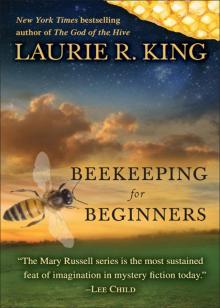 Beekeeping for Beginners
Beekeeping for Beginners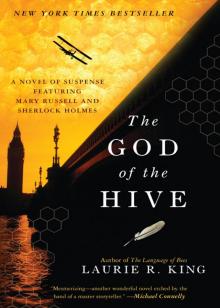 The God of the Hive
The God of the Hive The Language of Bees
The Language of Bees Night Work
Night Work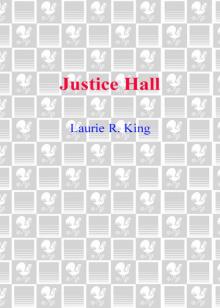 Justice Hall
Justice Hall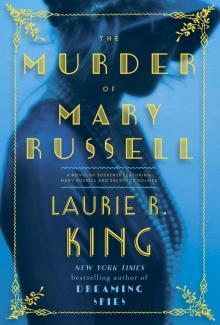 The Murder of Mary Russell
The Murder of Mary Russell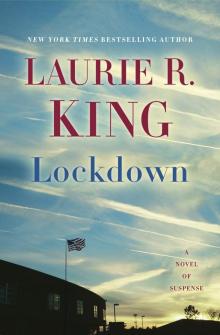 Lockdown
Lockdown To Play the Fool
To Play the Fool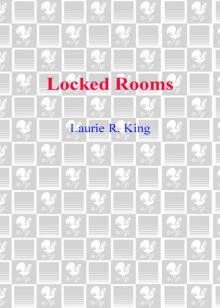 Locked Rooms
Locked Rooms Island of the Mad
Island of the Mad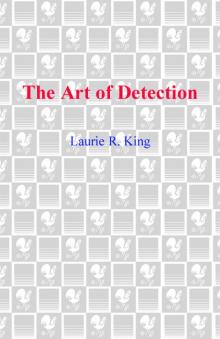 The Art of Detection
The Art of Detection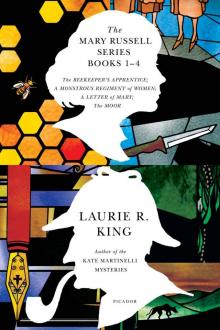 The Mary Russell Series Books 1-4
The Mary Russell Series Books 1-4 The Beekeeper's Apprentice
The Beekeeper's Apprentice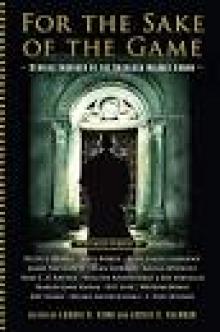 For the Sake of the Game
For the Sake of the Game A Darker Place
A Darker Place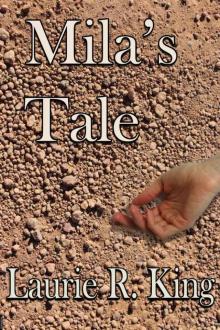 Mila's Tale
Mila's Tale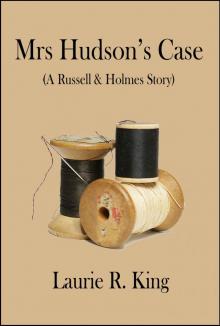 Mrs Hudson's Case
Mrs Hudson's Case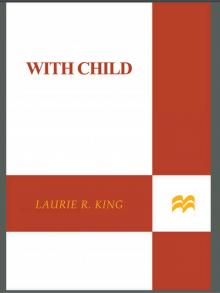 With Child
With Child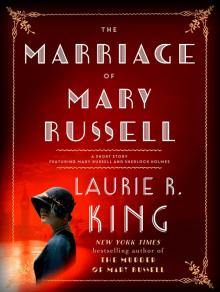 The Marriage of Mary Russell
The Marriage of Mary Russell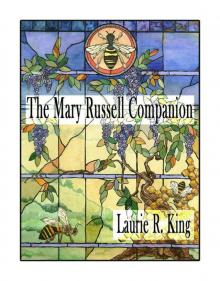 The Mary Russell Companion
The Mary Russell Companion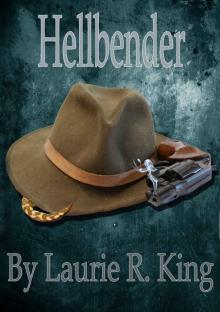 Hellbender
Hellbender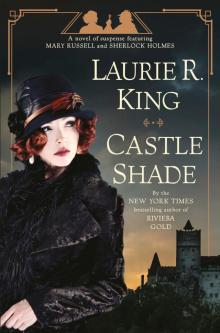 Castle Shade
Castle Shade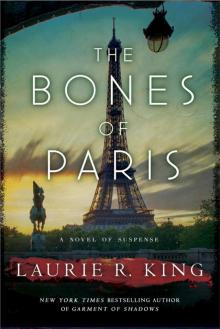 The Bones of Paris
The Bones of Paris Riviera Gold
Riviera Gold A Grave Talent
A Grave Talent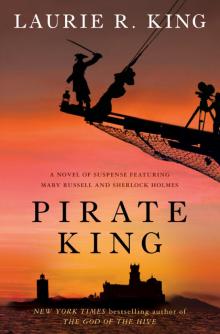 Pirate King
Pirate King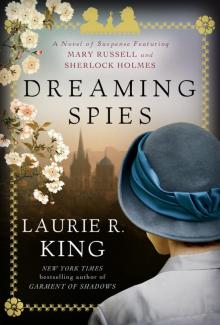 Dreaming Spies
Dreaming Spies Folly
Folly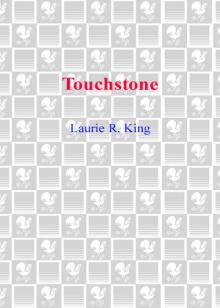 Touchstone
Touchstone The Game
The Game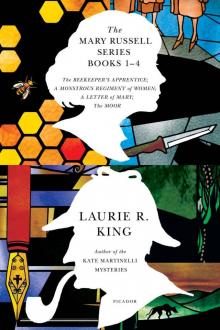 The Mary Russell Series Books 1-4: The Beekeeper's Apprentice; A Monstrous Regiment of Women; A Letter of Mary; The Moor
The Mary Russell Series Books 1-4: The Beekeeper's Apprentice; A Monstrous Regiment of Women; A Letter of Mary; The Moor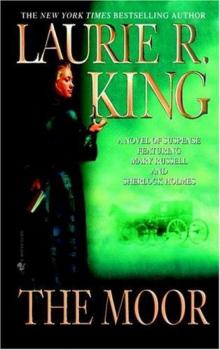 The Moor mr-4
The Moor mr-4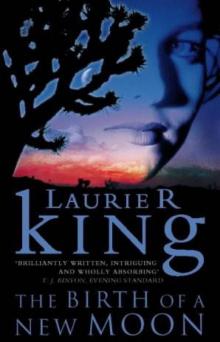 The Birth of a new moon
The Birth of a new moon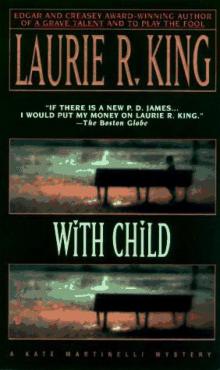 With Child km-3
With Child km-3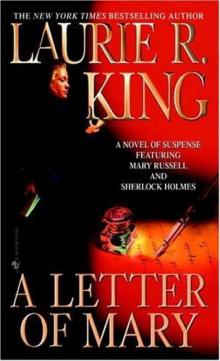 A Letter of Mary mr-3
A Letter of Mary mr-3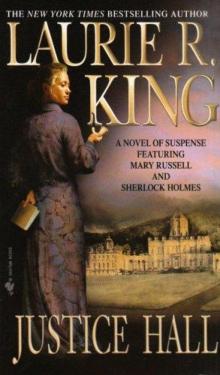 Justice Hall mr-6
Justice Hall mr-6 Pirate King: A novel of suspense featuring Mary Russell and Sherlock Holmes
Pirate King: A novel of suspense featuring Mary Russell and Sherlock Holmes Pirate King: A novel of suspense featuring Mary Russell and Sherlock Holmes mr-11
Pirate King: A novel of suspense featuring Mary Russell and Sherlock Holmes mr-11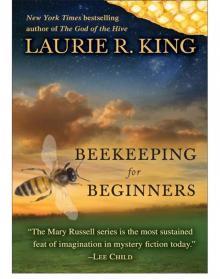 Beekeeping for Beginners (Short Story)
Beekeeping for Beginners (Short Story)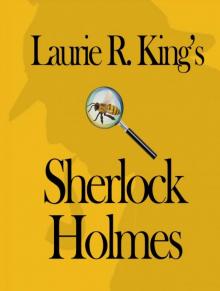 Laurie R. King's Sherlock Holmes
Laurie R. King's Sherlock Holmes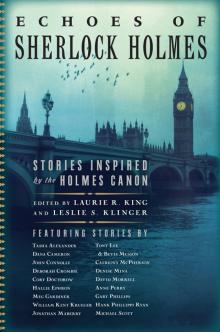 Echoes of Sherlock Holmes
Echoes of Sherlock Holmes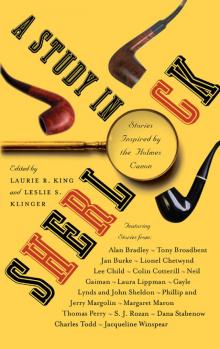 A Study in Sherlock
A Study in Sherlock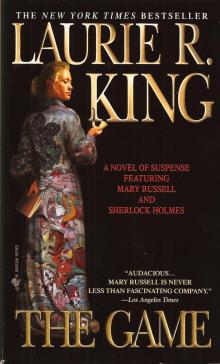 The Game mr-7
The Game mr-7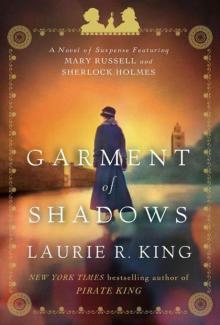 Garment of Shadows: A Novel of Suspense Featuring Mary Russell and Sherlock Holmes
Garment of Shadows: A Novel of Suspense Featuring Mary Russell and Sherlock Holmes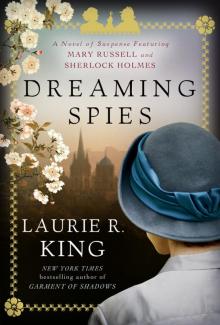 Dreaming Spies: A novel of suspense featuring Mary Russell and Sherlock Holmes
Dreaming Spies: A novel of suspense featuring Mary Russell and Sherlock Holmes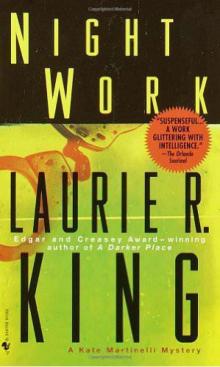 Night Work km-4
Night Work km-4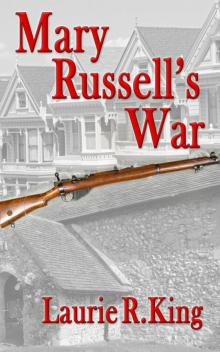 Mary Russell's War
Mary Russell's War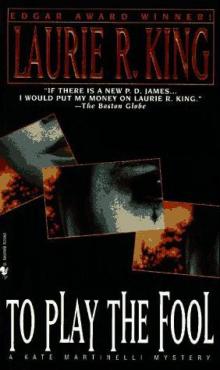 To Play the Fool km-2
To Play the Fool km-2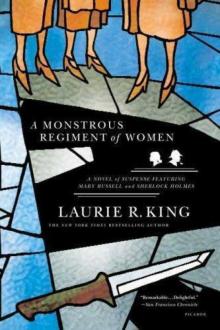 A Monstrous Regiment of Women mr-2
A Monstrous Regiment of Women mr-2 O Jerusalem mr-5
O Jerusalem mr-5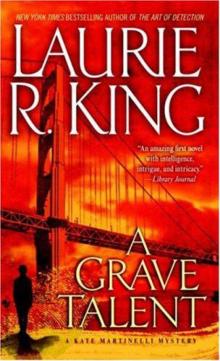 A Grave Talent km-1
A Grave Talent km-1